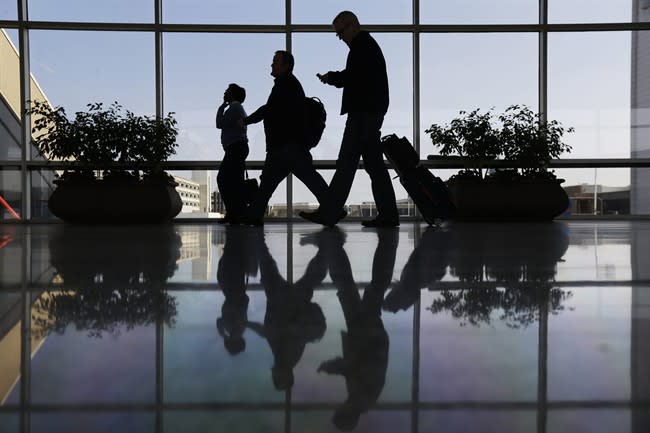 Daily Brew
Daily BrewCanadian, Ukrainian engineers designing portable concealed weapons detector

Canadian and Ukrainian researchers are working together to build a portable device that soldiers, police and border agents could use to covertly detect concealed weapons and deter security threats.
The NATO-funded research project is headed up on the Canadian side by McMaster University electrical and computer engineering professor Natalia Nikolova.
“Part of this project is building collaboration with Ukraine and helping them acquire adequate instruments and equipment,” Nikolova told Yahoo Canada News.
“So, the goals of this project are not purely technical; they have significant social and political impact as well.”
1The idea is to equip soldiers and law-enforcement officials with portable devices that could detect concealed guns and explosives up to 15 metres away.
These devices could be used at airports, borders or crowded events — anywhere a security threat may be looming — to stop disasters before they start.
Imagine if Michael Zehaf-Bibeau’s rifle had been detected before he stormed Parliament Hill on Oct. 22. Or if the Tsarnaev brothers’ homemade explosives could have been detected amid the crowd at the Boston Marathon in 2013 before they went off, killing three people and injuring 300.
The device, Nikolova explained, would work by emitting a radar pulse.
“This is the same kind of energy pulse that is used by airport radars as well as mobile phones,” she said.
Portions of those radio waves would then reflect off people, like an echo.
“The trick is that upon reflection, this pulse interacts with the surface of the person's body and everything that is on it,” Nikolova explained.
“This process of interrogating the screened person or object modifies the radar echo in very particular ways that we can use to tell whether this person has some unusual objects on his or her body, and whether these unusual objects pose a threat.”
And all of this can be done without ever having to approach a target.
“The tool does not require the screened persons to co-operate. That is to say, people are free to move around and go on their way while they are being screened,” she said. “Such a tool is not available currently.”
Long-distance weapons detection is a growing field of study as law-enforcement and defence agencies work to prevent mass shootings and terrorists attacks.
The U.S. National Institute of Justice has been working since the ‘90s to develop technology to detect weapons from afar. The University of Michigan’s Kamal Sarabandi has been working on a tool to use Doppler radar technology to scan large crowds for concealed weaponry.
Nikolova has plenty of experience in the field of weapons detection. Between 2010 and 2013, she worked with the NSERC Strategic Project Grant and the Defence Research and Development Canada to develop a screening device that can be mounted at the entrances of public buildings to detect concealed weapons two to three metres away.
On this latest project, Nikolova is working with her team at McMaster in Hamilton, as well as researchers from the National Technical University of Ukraine in Kyiv.
NATO has provided $766,300 for the three-year venture under its Science for Security and Peace Programme. The team expects to have prototypes ready for testing by 2018.
“Provided the tests are successful, the technology could proceed to commercialization,” Nikolova said.
More from Yahoo Canada News:

 Yahoo Finance
Yahoo Finance 
